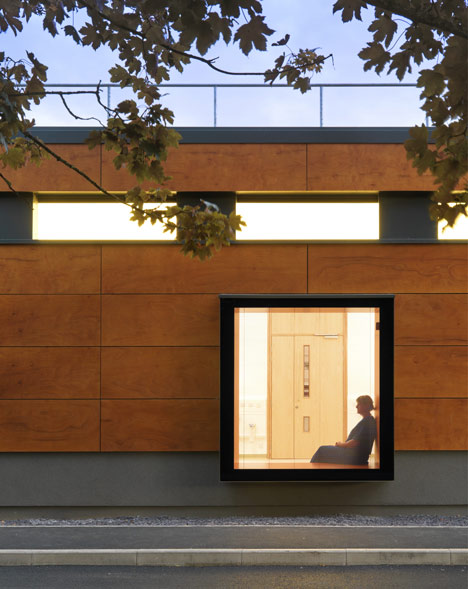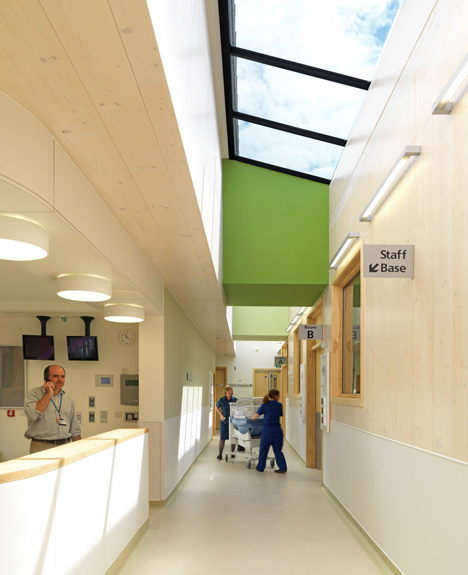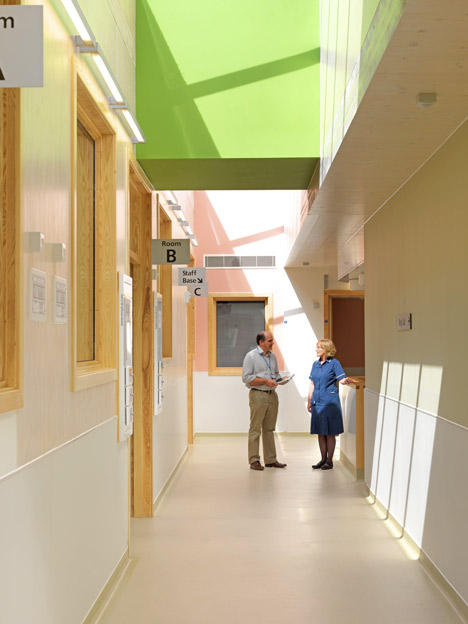News:?British inventor James Dyson has donated ?4 million towards building a new cancer centre in Bath, UK, based on the principles underlying his successful redesign of a neonatal ward at the same hospital.
Dyson, who lives and works near to the Royal United Hospital, said he hoped the new centre would be able to replicate the success of the Dyson Centre for Neonatal Care.
"Research has shown the incredible effect that a healing environment can have on recovery," said the inventor, whose best-known products include a bagless vacuum cleaner and a?fan heater with no blades.
"This new cancer centre will use cutting edge technology and well considered design to improve the health of its patients."

By reducing background noise from hospital machinery and increasing natural light, doctors at the hospital?found that the condition of sick and premature newborns improved substantially.
"We have been hugely impressed by the outcomes," Dyson said of the baby unit,?which was designed by?local architects?Feilden Clegg Bradley Studios.
A study funded by the?James Dyson Foundation, the charitable body set up by the designer, found that 90% of babies recuperating in the unit went home breastfeeding, compared to 64% in the old building.

Large windows and skylights increased natural light by up to 50% and exposed babies to changing outside conditions, helping them gain awareness of day and night.
Noise levels were decreased by over 9 decibels on average, helping babies to sleep on average for 22% longer than in the old unit, while nurses in the new building spent 20% more of their time with the newborns.
The cot rooms are arranged in a clockwise circuit from intensive care through to high dependency, special care, the parents? rooms and finally home, so that parents can clearly track their baby's route to recovery.
Medical equipment is fixed to the ceiling and pulled down when in use, reducing clutter at ground level.

Dr. Bernie Marden, a consultant neonatologist and paediatrician on the ward, said the study had allowed doctors to build up an accurate picture of how babies respond to their environment.
"We have found that the design of the building is leading to better fed and better rested babies, contributing to their recuperation," he said.
See more of The Dyson Centre in our earlier post, published shortly after the unit opened in 2011, or see more hospitals and healthcare centres on Dezeen.
Here's more information from Dyson:
The Dyson Centre for Neonatal Care is leading the way in improving the quality of life for sick and premature babies. Pioneering research funded by the James Dyson foundation, has found that of babies studied, 90% recuperating in the new unit went home breast feeding, compared to 64% in the old building. The study also showed that babies are better rested ? sleeping on average for 22% longer than in the old unit.
Through award winning architecture, the new Neonatal Intensive Care Unit (NICU) creates a healthier environment for babies, parents, and nursing staff. The project was funded in partnership with the NHS and private donations, including ?750,000 from the Dyson family and the James Dyson Foundation.?The building has a progressive layout. A clockwise circuit of cot rooms, starting with intensive care and leading to special care and finally home. This creates a psychological effect of development. Large windows give controllable natural light throughout, allowing babies, parents and staff to be aware of changing outside conditions, gaining an awareness of day and night.
The Research
A ?100,000 donation by the James Dyson Foundation is enabling research to ascertain the full benefits of the new building. Collecting data from both the old building and the new, the hospital is building up a picture of the ideal environment for recuperation.
Consultant neonatologist and paediatrician, Dr. Bernie Marden said: "We have collated vast amounts of data using new techniques to build up a really accurate picture of how babies respond to their environment. We have found that the design of the building is leading to better fed and better rested babies, contributing to their recuperation."
James Dyson said: "New technology has been specifically adapted to monitor a baby?s sleep cycle and respiratory patterns in a far less invasive way than ever before. The findings show the way in which design and technology can have an effect far beyond the hands of a single consumer ? aiding health."
Accelerometers measure speed and movement; they are used in aircraft and smartphones and increasingly in sports and athletics. Bath Rugby Club uses the technology to analyse player training techniques and fitness.
This research is the first in the world to adapt and use accelerometers to measure the respiratory and sleep patterns in a baby in order to monitor their reaction to the surrounding environment, using an extremely low power, self contained wireless device. Previously intrusive methods including ECG and information from ventilator circuits have been used to measure this.
The accelerometers have been found to be sensitive enough to provide remote and wireless respiratory information. Doing away with invasive tubing and tangled wires. This is a significant result which may allow for remote monitoring of apnoea, effort of breathing and the quality of sleep. The studied babies in the new centre were found to be asleep or in a restful state for longer than in the old building.
Infrared tracking technology was used to pinpoint staff movements in the building and test the efficiency of the design. The study found that nurses in the new building spend 20% more of their time in the clinical rooms, with the babies. Meaning more time spent caring for the babies.
Lux meters were used to take light measurements according to specific times, dates and outside weather conditions. Up to 50% more natural light was measured in the new building. This ensures a more natural circadian rhythm ? allowing the babies, parents and staff to perceive the changing day, aiding the babies sleeping and eating habits.
Sound pressure level meter readings were taken and an average level for each hour was documented in decibels. Noise levels in the special care unit have decreased by over 9dB on average from those in the old building. It is suggested that the increased sleep observed in the babies relates to this reduction in background noise.
Cot side diaries used in the research captured the physiological state of the babies in each environment and the interaction of parents with their babies. In addition a qualitative aspect of the project measured how the ?intervention? (the building) affected parental and staff experience, taking the form of semi structured psychological interviews.
fox sports obama speech Art Modell Frank Ocean Gay bill clinton andy roddick Costa Rica Earthquake
No comments:
Post a Comment